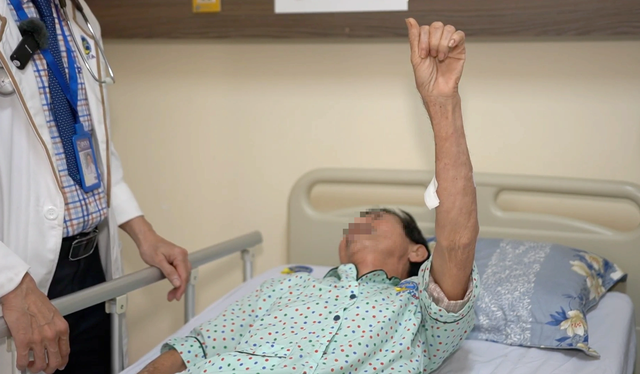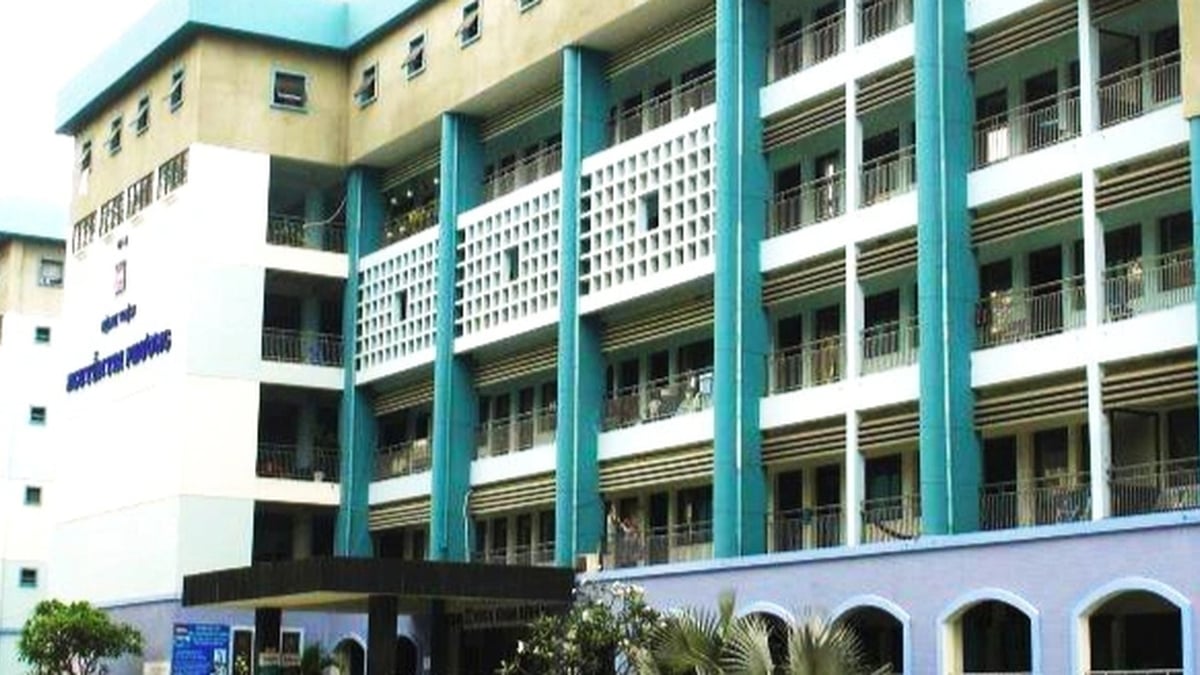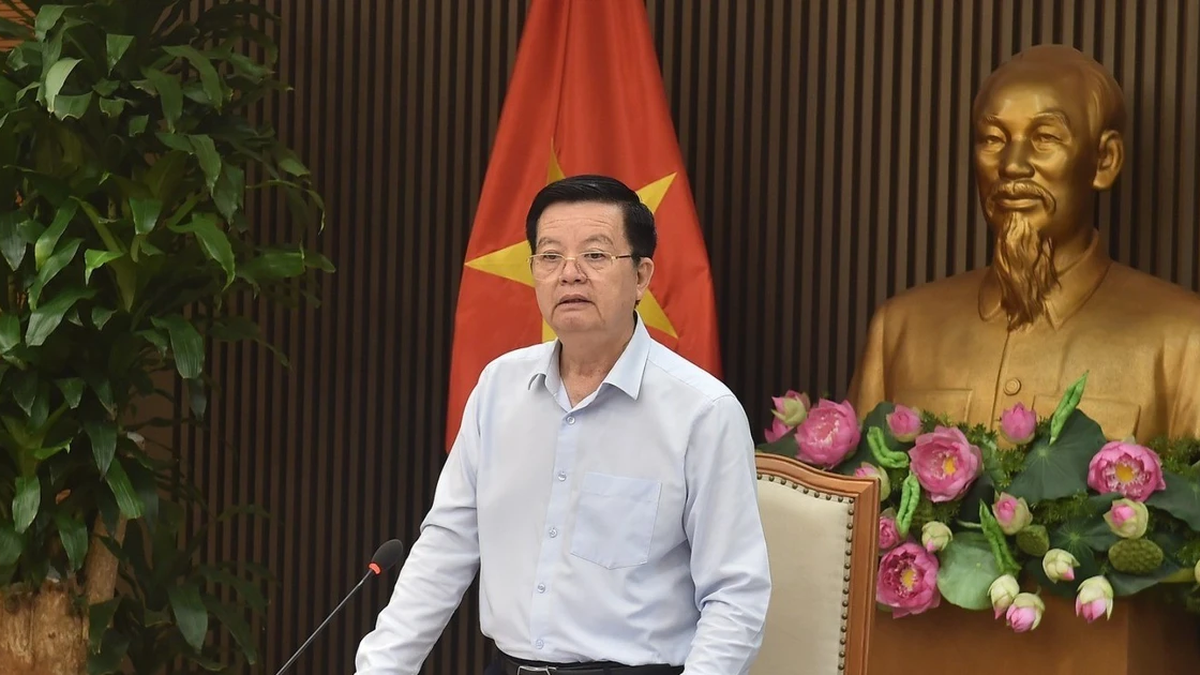Mr. TQB was taken to the Emergency Department of Xuyen A General Hospital (HCMC) in a coma. After a quick examination, doctors determined that Mr. B. had typical signs of a stroke.
The doctor ordered an urgent CT scan, and the results showed that Mr. B. did not have a brain hemorrhage. At the same time, based on the patient's family's information, the team determined that this was an acute stroke that was still in the "golden time".
On April 16, specialist doctor Do Le Tin, Deputy Head of the Department of Neurology, Xuyen A General Hospital (HCMC) said that doctors had conducted a consultation and prescribed intravenous thrombolytic therapy (rTPA) to help dissolve blood clots causing cerebral vascular occlusion.
Patient practicing hand movement
PHOTO. BSCC
After the injection, according to the stroke emergency procedure, the patient had a CT scan of the brain's blood vessels with contrast. Doctors discovered a blockage in the basilar artery. This is a very important artery that nourishes the brain stem. Stroke due to basilar artery occlusion is a type of stroke with a mortality rate of up to 90% if not detected early and treated promptly. Faced with this dangerous situation, the team of doctors consulted and with the consent of the patient's family, the patient underwent intervention to remove the clot with a device to reopen the blocked blood vessel.
Take advantage of the golden time to save patients
According to Dr. Tin, in the case of patient B., the time from the patient's admission to the injection of thrombolytic drugs was only about 25 minutes and the time to the endovascular intervention was only about 2 hours - this is a relatively short period of time, and the team made every effort to take advantage of the golden time, creating the best conditions for the patient's emergency care, helping to improve treatment effectiveness, and minimizing post-stroke sequelae for the patient.
Immediately after the intervention, the patient was able to communicate, his voice improved and he was able to move his arms and legs, his motor and language functions returned to normal, the patient recovered almost completely and could perform daily activities while still in the hospital.
"The patient was successfully saved thanks to good coordination between the reception, treatment and recovery of the patient. Currently, the patient has experienced a stroke and has a long-term smoking habit, so to limit the risk of stroke, people need to maintain healthy living habits, exercise regularly, do not smoke, use stimulants, limit alcohol and beer and treat underlying diseases such as high blood pressure, diabetes, lipid disorders...", Dr. Tin recommended.
Early signs of stroke
Dr. Tin shares the FAST rule for early detection of suspected stroke:
Face: There is asymmetry or drooping of one side of the mouth. Have the patient sit upright and observe or ask the patient to smile.
Arm: There are signs of paralysis in the arms and legs. When the patient raises both arms or legs, if one side is weaker or falls down first, it shows paralysis.
Speech (language): Abnormal language condition in people with stroke. The patient has difficulty speaking, has a "distorted" voice or cannot speak.
Time: An important factor in stroke treatment. If the above three signs are present at the same time, indicating that the patient is at very high risk of stroke, urgently take the patient to a medical facility capable of stroke treatment.
Source: https://thanhnien.vn/dang-be-chau-tren-tay-nguoi-dan-ong-dot-ngot-roi-vao-hon-me-dot-quy-185250416144716717.htm


























![[Photo] National Assembly Chairman attends the seminar "Building and operating an international financial center and recommendations for Vietnam"](https://vphoto.vietnam.vn/thumb/1200x675/vietnam/resource/IMAGE/2025/7/28/76393436936e457db31ec84433289f72)








































































Comment (0)